
History

 |
Newfoundland History |
 |
Claude Bélanger,
[Wherever it is pertinent, links to the Canadian Encyclopedia (Can. Ency), the Dictionary of Canadian Biography (DCB), or to a suitable site (website or a specific title) are made to complete and update the information presented here. The reader is urged to follow these links. The Editor has added to the original text all elements between brackets [...], as well as images and links. Factual mistakes and orthography have been corrected where appropriate. An extensive and rich collection of photos/pictures of Newfoundland from the 1880's may be consulted. The collection is divided into regions: the Avalon Peninsula, the Burin Peninsula, the Northeast region, and the Labrador area. For the full citation of the source, see the end of the text.]
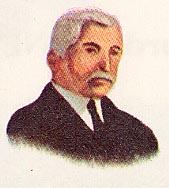 Alderdice,
Frederick Charles (1872-1936), Prime Minister of Newfoundland (1928, 1932-34), was born in Belfast
on November 10, 1872, son of William Alderdice and Rachel Monroe. He was educated
at Methodist College, Belfast. In 1886 he came to Newfoundland and worked
for the Colonial Cordage Company, then under the presidency of his uncle Moses
Monroe. He was appointed vice-president and managing director of the firm
in 1922, and was director of several other enterprises. In 1924 he was appointed
to the legislative council, and four years later became government leader
in the council. On the retirement of the Hon.
W. S. Monroe in 1928, he assumed the office of Prime Minister, and
was returned as a member in the election in October, 1928, but his party was
defeated. In 1932 his party won 24 of the 27 seats, and he was Prime Minister
until February 16, 1934, when governmentbycommission
became effective. [Alderdice supported the establishment of Commission of
government, formed following the recommendations of the Amulree
Commission that he had established in 1933. In his view, Newfoundland
was threatened with defaulting on its debt payments. The debt of the country
had increased from $43,032,785 in 1920 to over $81,000,000 by 1930; the Great
Depression was making a bad situation desperate as the debt reached rapidly
$100,000,000 in the early 1930's and debt service charges absorbed around
65% of the country's revenues.However, he felt the measure was necessary not
only for economic reasons but also as a reprieve from the corrupt practices
of Newfoundland politics, particularly from those of the Squires'
administration.] He was appointed vice-chairman of the commission and
commissioner for home affairs and education. He died on February 23, 1936.
In 1900 he married Harriet Carter, and byher had two sons and two daughters.
See The passing of Hon. F. C. Alderdice (Newfoundland Quarterly, 1936).
[Can.
Ency,] [website]
[Commission of Government,
1934-1949]
Alderdice,
Frederick Charles (1872-1936), Prime Minister of Newfoundland (1928, 1932-34), was born in Belfast
on November 10, 1872, son of William Alderdice and Rachel Monroe. He was educated
at Methodist College, Belfast. In 1886 he came to Newfoundland and worked
for the Colonial Cordage Company, then under the presidency of his uncle Moses
Monroe. He was appointed vice-president and managing director of the firm
in 1922, and was director of several other enterprises. In 1924 he was appointed
to the legislative council, and four years later became government leader
in the council. On the retirement of the Hon.
W. S. Monroe in 1928, he assumed the office of Prime Minister, and
was returned as a member in the election in October, 1928, but his party was
defeated. In 1932 his party won 24 of the 27 seats, and he was Prime Minister
until February 16, 1934, when governmentbycommission
became effective. [Alderdice supported the establishment of Commission of
government, formed following the recommendations of the Amulree
Commission that he had established in 1933. In his view, Newfoundland
was threatened with defaulting on its debt payments. The debt of the country
had increased from $43,032,785 in 1920 to over $81,000,000 by 1930; the Great
Depression was making a bad situation desperate as the debt reached rapidly
$100,000,000 in the early 1930's and debt service charges absorbed around
65% of the country's revenues.However, he felt the measure was necessary not
only for economic reasons but also as a reprieve from the corrupt practices
of Newfoundland politics, particularly from those of the Squires'
administration.] He was appointed vice-chairman of the commission and
commissioner for home affairs and education. He died on February 23, 1936.
In 1900 he married Harriet Carter, and byher had two sons and two daughters.
See The passing of Hon. F. C. Alderdice (Newfoundland Quarterly, 1936).
[Can.
Ency,] [website]
[Commission of Government,
1934-1949]
Allardyce, Sir William Lamond (1861-1930), governor of Newfoundland (1922-28), was born on November 14, 1861. He was educated at Oxford Military College and in 1879 entered the colonial service. He served in several Pacific colonies and was appointed governor of the Falkland Islands (1904-14), Bahamas (1915-20), Tasmania (1920-22), and Newfoundland (1922-28). He was twice married, (1) in 1895 to Constance Greene (d. 1919) of Melbourne, by whom he had two daughters, and (2) in 1920 to Elsie Elizabeth, widow of A. G. Goodfellow. He was created C.M.G. (1902); K.C.M.G. (1916), and G.C.M.G. (1927). [website]
[Amulree, William Warrender Mackenzie, Lord (1860-1941). British peer who was appointed by the government of Great Britain to the Newfoundland Royal Commission, 1933. The Commission was to investigate the financial difficulties of Newfoundland and propose measures to restore confidence in its financial position. The result was the suspension of Responsible Government in Newfoundland and the establishment of Commission of Government.] [Consult Melvin Baker's page on the history of Commission of Government between 1934 and 1949]
Anderson, Sir David Murray (1874-1936), governor (also under Commission of Government) of Newfoundland (1933-35), was born on April 11, 1874, second son of General David Anderson. He entered the navy in 1887, went to sea in 1889, and for his service in the Brass river expedition in West Africa in 1895, he was specially promoted to lieutenant and awarded the African medal. After serving in ships in various parts of the world, he was promoted to the rank of commander in 1905, and in 1911 was appointed captain of the Royal Yacht. It was during this period of his service that he was made a Member of the Victorian Order. During the war he took part in the operations that resulted in the destruction of the Konigsberg, and later commanded the battleship Ajax. For his services he was created C.M.G. and awarded the Brilliant Star of Zanzibar and the Rising Sun of Japan. After being in charge of the dockyard at Pembroke for nearly seven years, in 1923 he was appointed rear-admiral in command of the Yangtze gunboat flotilla. He served as commander-in-chief of the Chinese station, and of the African station, and as admiralty representative on the League of Nations permanent advisory commission. He was created K.C.B. in 1930, and in 1931 promoted to the rank of admiral. He retired the following year, and was appointed governor of Newfoundland in 1933. It was during his term of governorship that the constitution was suspended, and he presided over the commission which took the place of the legislature. In November, 1935, he was appointed governor of New South Wales. He died on October 30, 1936. In 1908 he married Edith Muriel, daughter of W. H. Teschemaker of Otago, New Zealand. [website]
[Anderson, Hugh Abercrombie (1890-1965). Veteran of the First World War, Broadway producer, teacher and playwright. (Archival treasures of Memorial University)]
[Anderson, John Murray (1886-1954). Broadway producer and Hollywood director. (Archival treasures of Memorial University)]
Anspach, Lewis Amadeus [1770-1823], [born in Geneva, Switzerland,] clergyman and historian, [he] opened the first grammar school in St. John's in 1779. From 1800 to 1812 he served as rector and magistrate at Harbour Grace. [Dissatisfied with local conditions, he returned to England in 1812] He was author of Summary of the laws of commerce and navigation, adapted to the present state, government, and trade of the island of Newfoundland (London, 1809) and History of Newfoundland (London, 1819). [DCB]
[Aston, Sir Arthur (dates unknown) Proprietary governor of the Avalon colony, c. 1625-1627. (Newfoundland Heritage site)]
Baltimore, George Calvert, first Baron (1580?-1632), statesman and colonizer, was educated at Trinity College, Oxford, (B.A., 1597). He was a member of parliament from 1609 to 1611, was knighted in 1617, and was created Baron Baltimore in 1625. He was secretary of state from 1619 to 1625. He bought the northern half of William Vaughan's grant in Newfoundland and in 1621 and 1622 sent out his agents Capt. Wynne and Capt. Daniel Powell with men to plant a colony at Ferryland. In 1623 he received a royal charter for his holdings which were to be called the Province of Avalon. When the colony did not prosper he visited it, in 1627, and returned the following year with his wife and family, with the intention of settling, but stayed only one winter. His subsequent request for a grant of land in Virginia was refused, but he was more successful in obtaining a grant in what, under his son Cecil, was to become the colony of Maryland. He died on April 15, 1632, before the Maryland charter had been completed. [website] [DCB] [Biography stressing his role in Maryland] [Biography at the Catholic Encyclopedia] [Can. Ency] [Ferryland Archaeological site]
[Bannerman, Sir Alexander (1788-1864). Colonial governor of Newfoundland from 1857 to 1864. His administration was plagued by religious and political strife that especially surfaced during the elections of 1861. The Bannerman Park, in St. John's, honours his memory. (Newfoundland heritage site)] [DCB]
Barbour, George [1858-1928]. Master mariner, was born July 27, 1858, at Cobbler's Island, Bonavista bay, Newfoundland, one of eleven children of Benjamin Barbour and Rebecca Green. He became master of a fishing vessel in 1876 and in 1893 became captain of the Walrus, a sealing steamer. As sealing master for more than thirty springs he took more than 700,000 seals. [His last sealing voyage was in 1928] In the service of the government he commanded, at various times, the Stella Maris, Falcon, Wren, and Senef. In 1880 he married Lucretia Jane, daughter of Robert Oakley, and by her had four children.
Bartlett, Robert Abram (Bob) (1875-1946). Master-mariner and explorer, was born at Brigus, Newfoundland on August 15, 1875, the son of Captain William Bartlett, [and the grandson of Abram B., both of whom had been sea captains comanding sailing vessels to the Arctic]. He was educated at Bishop Feild College [also took the examination as Master, Halifax Nautical Academy, 1902], went to sea, and in 1897 made his first trip to the far north, in Peary's Windward, then commanded by his uncle, Samuel Bartlett. He commanded the Roosevelt on Peary's polar expedition in 1909, and in 1914, as captain of the whaler Karluk in Stefansson's expedition through the Bering straits, led his party to safety five months after it had been reported lost. He piloted the Stoll-McCracken expedition to the Aleutians in 1928, and in 1930 took part in an expedition to the east coast of Greenland. From 1926 to 1941 he made annual cruises into arctic waters in his own schooner Effie M. Morrissey. He died in New York on April 28, 1946, and was buried at Brigus, Newfoundland. [Bartlett became a naturalized American citizen in 1911.] [Can. Ency] [website] [The story of Bartlett's schooner Effie M. Morrissey] [Biography at Bowdoin College]
[Bellot dit Lafontaine (dates unknown). Governor of Placentia/Plaisance between 1664-1667. (Newfoundland heritage site)] [DCB]
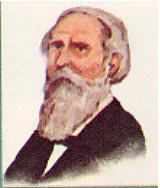 Bennett,
Charles Fox, [1793-1883].[Born in Dorset, England, came to Newfoundland at an early age and became involved
in various businesses. He sat in the House of Assembly of Newfoundland (1842-1848)
and in the Legislative Council between 1850 and 1855.]Prime
minister of Newfoundland (1870-74), [he] was principally responsible for rejection
in 1869 of the proposed union with Canada. [Can.
Ency] [DCB]
[Charles Fox Bennett's Objections
to Confederation in 1864-65] [Anti-confederation
speech in 1869] [Anti-confederate
song of 1869] [Melvin
Baker on Newfoundland's rejection of Confederation with Canada in the period
of 1865-1874] [Biography
at the Canadian Orangeism site]
Bennett,
Charles Fox, [1793-1883].[Born in Dorset, England, came to Newfoundland at an early age and became involved
in various businesses. He sat in the House of Assembly of Newfoundland (1842-1848)
and in the Legislative Council between 1850 and 1855.]Prime
minister of Newfoundland (1870-74), [he] was principally responsible for rejection
in 1869 of the proposed union with Canada. [Can.
Ency] [DCB]
[Charles Fox Bennett's Objections
to Confederation in 1864-65] [Anti-confederation
speech in 1869] [Anti-confederate
song of 1869] [Melvin
Baker on Newfoundland's rejection of Confederation with Canada in the period
of 1865-1874] [Biography
at the Canadian Orangeism site]
Bennett, Sir John (1866-1941), colonial secretary of Newfoundland (1913-17, 1924-28), was born in St. John's on August 8, 1866, son of Edward W. Bennett and Amelia Goff. He was educated at Bishop Feild College. He began his career as a clerk with O. F. Bennett & Co. in 1881, and later became principal owner and director of a brewing business. He was elected to the city council of St. John's in 1902, and from 1904 to 1923 represented St. John's West in the [House of] Assembly. In 1913 he accepted the portfolio of colonial secretary; and in 1917 resigned to become the first minister of militia. In 1923 he organized a party known as Liberal-Progressive, but was defeated. In the following year he was returned for the district of Harbour Grace, and again became colonial secretary: He was chairman of the board of directors of the government savings bank and president of several local companies. He was created a Knight of the British Empire in 1926. [He was made District Grand Master of English Freemasonry in Newfoundland the same year.] He died on October 23, 1941. He was twice married, (1) in 1891 to Laura Taylor (d.1931), by whom he had three sons and one daughter, and (2) in 1936 to Beatrice Shannon Greaves, daughter of George A. Hutchings. [website] [picture] [Biography at theCanadian Orangeism site]
Blake, Sir Henry Arthur, (1840-1918), governor of Newfoundland (1887-89), was born in Limerick, Ireland, on January 18, 1840. He began his career of colonial governorship in the Bahamas in 1884, and served subsequently in Newfoundland, Jamaica, Hong Kong, and Ceylon. He died on February 23, 1918. He was created C.M.G. (1887), K.C.M.G. (1888), and G.C.M.G. (1897). He was twice married: (1) in 1862 to Jeannie Irwin (d. 1866) of Ballymore, and (2) in 1874 to Edith, elder daughter of Ralph Bernal Osborne. [website]
Bolt, George Henry (1863-1947), clergyman, was born on September 15, 1863, the son of William and Elizabeth Bolt. He was educated in St. John's, Newfoundland and at Durham University (B.A. 1889, L.Th. 1890, M.A. 1892), and became a priest of the Church of England in 1891. After returning to Newfoundland he served as missionary for the Society for the Propagation of the Gospel at Lamaline, and subsequently served in several districts and in several capacities. From 1911 to 1935 he was canon of St. David in Newfoundland cathedral. He was a member of the Council of Higher Education, and in 1924 was made a life governor of the Canadian Bible Society. He became a D.C.L. of King's College, Windsor, Nova Scotia, in 1921. He died on May 25, 1947. He married Elizabeth Morris, and by her had one son and two daughters.
Bond, George (1850-1933), clergyman, brother of Sir Robert Bond, was born on July 1, 1850, in St. John's, Newfoundland. He graduated from Mount Allison University in 1874, and for several years was a circuit minister in Newfoundland. In 1891 he transferred to Nova Scotia, in 1895 became editor of the Halifax Wesleyan, and he moved to Toronto in 1902 to become editor of the Christian Guardian. In 1916 he returned to St. John's, Newfoundland, but moved to Nova Scotia again in 1921. He was president of the Newfoundland conference in 1885, 1888, and 1919, and of the Nova Scotia conference in 1911. During his ministry he visited missions in China, and in 1921 he was the Newfoundland delegate to the ecumenical conference in London. [Aside from his religious work, George Bond was also a writer. Among others, he penned Our Share in China.] He died in Halifax on June 22, 1933. In 1881 he married Lucy Macpherson, by whom he had two children. See The late Rev. Dr. George Bond (Newfoundland Quarterly, 1933
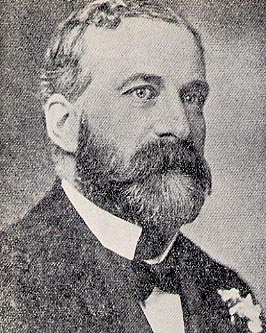 Bond,
Sir Robert (1857-1927).
[Prime Minister] of Newfoundland (1900-1909), was born in St.
John's, Newfoundland, on February 25, 1857, the second son of John Bond.
He was educated in England, at Queen's College, Taunton, and studied law,
[although he was never admitted to the Bar]. He [.] devoted his life to politics.
From his first election to represent Trinity Bay in 1882 until his final retirement
from public life in 1914, his life was given up to the public business of
Newfoundland. Two years after entering the House of Assembly, he was elected
its Speaker; and five years later, in 1889, he was given the portfolio of
colonial secretary in the administration of Sir
William Whiteway. From 1890 he represented Newfoundland in the long and
sometimes strained negotiations
with the French, which were finally settled in 1904, as part of the entente
cordiale policy, on the basis of compensation of France in money and land
in Africa, and the extinction of the French rights, which had caused friction
for two hundred years. In 1890 also he was appointed to assist Lord Pauncefoot
in negotiating a reciprocity
treaty with the United States, and he was mainly instrumental in completing
what is known as the Bond-Blaine
Convention. In 1892 he was appointed a delegate to meet Sir
John Thompson, Sir
Mackenzie Bowell, and Sir
Adolphe Chapleau at Halifax on the Newfoundland fisheries question. [In
1893, following charges of bribery and corruption filed with the Newfoundland
Supreme Court, Bond was unseated from his Trinity district seat in the House
of Assembly and disqualified from running again. Re-elected from Twillingate]
in 1895 he was appointed chairman of the deputation sent by his government
to the 'Ottawa
Conference' in reference to the question of entering the Confederation,
a conference which broke down over finance. From 1900 to 1909 he was Prime
Minister and colonial secretary for Newfoundland; but in 1909 the Liberal
party, which he led, was driven from office [following an election that had
resulted in
a tie between his Liberal Party and Edward Morris' People's Party. The
election result provoked a constitutional crisis, with Governor MacGregor
cast as an arbitrator]. He continued as leader of opposition until his resignation
in 1914. [All through his public life, Bond remained a supporter of reciprocity
with the United States. His administration is also known for operating in
a financially responsible manner, his governments having accumulated surpluses
from year to year. He
Bond,
Sir Robert (1857-1927).
[Prime Minister] of Newfoundland (1900-1909), was born in St.
John's, Newfoundland, on February 25, 1857, the second son of John Bond.
He was educated in England, at Queen's College, Taunton, and studied law,
[although he was never admitted to the Bar]. He [.] devoted his life to politics.
From his first election to represent Trinity Bay in 1882 until his final retirement
from public life in 1914, his life was given up to the public business of
Newfoundland. Two years after entering the House of Assembly, he was elected
its Speaker; and five years later, in 1889, he was given the portfolio of
colonial secretary in the administration of Sir
William Whiteway. From 1890 he represented Newfoundland in the long and
sometimes strained negotiations
with the French, which were finally settled in 1904, as part of the entente
cordiale policy, on the basis of compensation of France in money and land
in Africa, and the extinction of the French rights, which had caused friction
for two hundred years. In 1890 also he was appointed to assist Lord Pauncefoot
in negotiating a reciprocity
treaty with the United States, and he was mainly instrumental in completing
what is known as the Bond-Blaine
Convention. In 1892 he was appointed a delegate to meet Sir
John Thompson, Sir
Mackenzie Bowell, and Sir
Adolphe Chapleau at Halifax on the Newfoundland fisheries question. [In
1893, following charges of bribery and corruption filed with the Newfoundland
Supreme Court, Bond was unseated from his Trinity district seat in the House
of Assembly and disqualified from running again. Re-elected from Twillingate]
in 1895 he was appointed chairman of the deputation sent by his government
to the 'Ottawa
Conference' in reference to the question of entering the Confederation,
a conference which broke down over finance. From 1900 to 1909 he was Prime
Minister and colonial secretary for Newfoundland; but in 1909 the Liberal
party, which he led, was driven from office [following an election that had
resulted in
a tie between his Liberal Party and Edward Morris' People's Party. The
election result provoked a constitutional crisis, with Governor MacGregor
cast as an arbitrator]. He continued as leader of opposition until his resignation
in 1914. [All through his public life, Bond remained a supporter of reciprocity
with the United States. His administration is also known for operating in
a financially responsible manner, his governments having accumulated surpluses
from year to year. He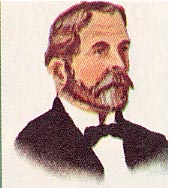 was the Prime Minister in 1904 when the thorny French
Shore issue was resolved to the satisfaction of Newfoundland.] He was
created a K.C.M.G. in 1901; was sworn of the Privy
Council in 1902; was granted the freedom of the cities of London, Bristol,
and Manchester; and was an LL.D. of the University of Edinburgh (1902). After
his resignation from public life in 1914 he lived in retirement in St.
John's, Newfoundland, where he died on March 16, 1927. He was not married.
[Bond was a Methodist. Although a delegate to the discussions between Canada
and Newfoundland in 1895, once he became Prime Minister of Newfoundland he
declared "that there is no desire on the part of the islanders to be included
as a constituent part of the Dominion of Canada, but, on the contrary, that
the colony should retain its autonomy, and continue to maintain an honourable
and independant position as part of the British Empire.] [Can.
Ency] [Melvin Baker
on Reid Newfoundland and the Bond administration, 1895-1908] [The
Bond administration and the tie
election of 1908] [Sir
Robert Bond presided over a Golden Age] [From
Tragedy to Triumph: Bond Moves Past Bribery Charges to become the Prime Minister
of Newfoundland] [Bond
Rules Despite Challenges] [Bond's
Political Career Winds Down] [Biography
at the Canadian Orangeism site] [Daniel
Prowse on the Bond-Blaine Treaty]
was the Prime Minister in 1904 when the thorny French
Shore issue was resolved to the satisfaction of Newfoundland.] He was
created a K.C.M.G. in 1901; was sworn of the Privy
Council in 1902; was granted the freedom of the cities of London, Bristol,
and Manchester; and was an LL.D. of the University of Edinburgh (1902). After
his resignation from public life in 1914 he lived in retirement in St.
John's, Newfoundland, where he died on March 16, 1927. He was not married.
[Bond was a Methodist. Although a delegate to the discussions between Canada
and Newfoundland in 1895, once he became Prime Minister of Newfoundland he
declared "that there is no desire on the part of the islanders to be included
as a constituent part of the Dominion of Canada, but, on the contrary, that
the colony should retain its autonomy, and continue to maintain an honourable
and independant position as part of the British Empire.] [Can.
Ency] [Melvin Baker
on Reid Newfoundland and the Bond administration, 1895-1908] [The
Bond administration and the tie
election of 1908] [Sir
Robert Bond presided over a Golden Age] [From
Tragedy to Triumph: Bond Moves Past Bribery Charges to become the Prime Minister
of Newfoundland] [Bond
Rules Despite Challenges] [Bond's
Political Career Winds Down] [Biography
at the Canadian Orangeism site] [Daniel
Prowse on the Bond-Blaine Treaty]
Bonfoy, Hugh, naval captain, was governor of Newfoundland from 1752 to 1755. [website]
[Bowers, Patrick Raymond (1944-1911). Editor and journalist. (Archival treasures of Memorial University)]
Bowring, Sir Edgar Rennie (1858-1943), industrialist, was born at St. John's, Newfoundland, on August 17, 1858, the son of John Bowring and Mary Rennie. He was educated at Bishop Feild College, St. John's, and Liverpool and Scarborough, England. In 1891 he became director of Bowring Brothers, Ltd., steamship owners and agents. He was appointed to the legislative council in 1897, was a member of the Dominion's Royal Commission in 1912, and was the first high commissioner for Newfoundland (1918-22). [In 1911, on the occasion of the celebration of the centenary of Bowring Brothers in Newfoundland, he donated $50,000 to create a memento for the event. This eventually became Bowring Park, one of the loveliest and largest of the public parks of St. John's.] He was created a knight bachelor in 1915. He died on June 23, 1943. In 1888 he married Flora Munn, daughter of the Hon. James Clift. [website]
Boyle, Sir Cavendish (1849-1916), governor of Newfoundland (1901-04), was born on May 29, 1849. He entered the colonial service and served in the Leeward islands (1879), Bermuda (1882-88), Gibraltar (1888-94), British Guiana (1894-1901), Newfoundland, and Mauritius (1904-11). He was author of "Newfoundland", which was adopted as the national ode, and other poems. He was created C.M.G. in 1888, and K.C.M.G. in 1897. He died on September 17, 1916. In 1914 he married Louise, youngest daughter of Reuben Sassoon. [DCB] [website]
[Bradley, F. Gordon (1888-1966). Born in St. John's, he attended Dalhousie University and became a lawyer; he was active in the Orange Lodge of which he was a Grand Master. A former member of the Newfoundland House of Assembly (1924-1934) and Leader of the opposition from 1932-1934, he was elected to the National Convention in 1946 and, eventually, became its chairman. He headed the Newfoundland delegation to negotiate the terms of Union with Canada. After 1949, he became the Secretary of State for Canada. In 1953, he was appointed to the Senate.] [Biography at the Newfoundland Heritage site] [Biography at the Canadian Orangeism site] [His resignation from his post as Convention Chairman] [Picture of the members of the National Convention] [Biography at the Canadian Confederation site of the National Library of Canada] [Biography at Terra Nova Greens] [History of the Newfoundland National Convention]
Brothers, Richard (1757-1824), enthusiast, was born in Newfoundland on December 25, 1757. He studied at Woolwich, joined the navy as a midshipman in 1771, and in 1783 was promoted to the rank of lieutenant. In July, 1783, he was discharged on half-pay, and for four years served in the merchant marine. In 1789, having refused to take the oath of allegiance to an earthly sovereign [George III], he failed to receive his half-pay. In 1792 he began to write prophetic letters to the king and members of the government, in 1794 published A revealed knowledge of the prophecies and times. Book the first. Wrote under the directions of the Lord God., andin 1795 An exposition of the Trinity; with a further elucidation of the twelfth chapter of Daniel... He claimed himself, in these writings, to be prince of the Hebrews, nephew of God, and rightful king of England. In March, 1795, he was arrested on a charge of treasonable practices, and confined as a criminal lunatic. In 1806 the charge of treason was withdrawn and he was released into the custody of his disciple John Finlayson, with whom he lived until his death on January 25, 1824. See J. R. Smallwood, (ed.) Book of Newfoundland. (St. John's, 1937); Dictionary of national biography. [website] [website]
[Brown, Cassie (1919-1986). Author of Death on the Ice: the history of the great sealing disaster of 1914. (Archival treasures of Memorial University)]
[Browne, Patrick William (1864-1937). Priest, teacher and writer. (Archival treasures of Memorial University)]
[Burry, Lester (1898-1977). Studied at Mount Allison University and joined the Ministry of the United Church and served in Labrador where he was associated with Wilfred Grenfell. He was elected to the National Convention in 1946 and was a delegate to Ottawa to negotiate the terms of union of Newfoundland with Canada. [Newfoundland Heritage site] [Speech to the National Convention] [Picture of the members of the National Convention] [Biography at Terra Nova Greens] [History of the Newfoundland National Convention]
[Butt, Albert Boyle (1904-1989). Politician, organizer, a member of the National Convention and a supporter of Newfoundland's return to responsible government in 1948. (Archival treasures of Memorial University)]
Byng, John (1704-57); admiral, was governor of Newfoundland in 1742. He entered the navy in 1718, and in 1756 attained the rank of admiral. In 1756 he was sent to relieve Minorca, and when he failed to carry out his orders, was tried, found guilty of negligence, and sentenced to death. The sentence was carried out in Portsmouth Harbour in March 14, 1757. [website]
Byron, John(1723-1786), governor of Newfoundland (1769-72), was the second son of the fourth Lord Byron. In 1760 he was sent, with a small squadron, to superintend the destruction of the fortifications at Louisbourg. In 1764 he was commander-in-chief in the East Indies, and later made a. voyage of exploration in the South seas. He died, vice-admiral of the white, in 1786. [DCB] [website]
Cabot, John (fl. 1461-1499), explorer, was a native
of Genoa, in Italy. His
baptismal name was Giovanni Gabotto, of which John Cabot was an anglicized
version. In 1461 he went to Venice,
and in the service of a Venetian mercantile house he visited the eastern shores
of the Mediterranean, and even penetrated to Mecca.
Here he came in touch with the caravans from the Far East; and he seems, independently
of Columbus,
to have conceived the idea of reaching the Far East by sailing westward across
the Atlantic. He went to England in 1484, with a view to prosecuting this
project, and he enlisted the aid of the merchants of Bristol.
He seems to have made several expeditions to the west, without any success;
but in 1493 word 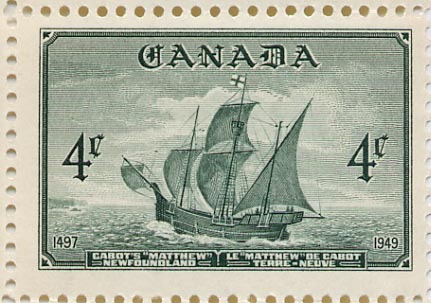 reached
England that Columbus had reached the West Indies, and in 1497 Cabot again
set sail westward in a small ship named the Matthew,
with a crew of eighteen men. This time he made a landfall on some
part of the coast of north-eastern America, possibly on Cape
Breton Island, and took possession of the land in the name of Henry
VII of England. The following year he made a second expedition, with two
ships, and explored some part of the coast of north-eastern America, though
his course is a matter of conjecture. He traded with the Indians (or perhaps
the Eskimo),
but he failed to find on the bleak coasts he visited the wealth of which be
was in search, and his expedition was a commercial failure. But if he failed
to find the wealth of Asia, he led the way to a source of wealth hardly less
great: the American fisheries. His son, Sebastian
Cabot, who seems to have accompanied him, told afterwards how, off the
Banks
of Newfoundland, the codfish were so thick "they sumtymes stayed his shippes";
and thus the fishermen of western Europe were directed to the American fisheries,
which they began to exploit as early as 1501. After his
reached
England that Columbus had reached the West Indies, and in 1497 Cabot again
set sail westward in a small ship named the Matthew,
with a crew of eighteen men. This time he made a landfall on some
part of the coast of north-eastern America, possibly on Cape
Breton Island, and took possession of the land in the name of Henry
VII of England. The following year he made a second expedition, with two
ships, and explored some part of the coast of north-eastern America, though
his course is a matter of conjecture. He traded with the Indians (or perhaps
the Eskimo),
but he failed to find on the bleak coasts he visited the wealth of which be
was in search, and his expedition was a commercial failure. But if he failed
to find the wealth of Asia, he led the way to a source of wealth hardly less
great: the American fisheries. His son, Sebastian
Cabot, who seems to have accompanied him, told afterwards how, off the
Banks
of Newfoundland, the codfish were so thick "they sumtymes stayed his shippes";
and thus the fishermen of western Europe were directed to the American fisheries,
which they began to exploit as early as 1501. After his 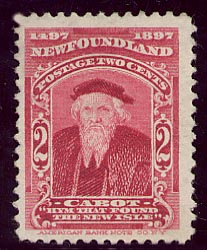 expedition
of 1497, Cabot was granted a pension by Henry VII, and he drew this in 1498
and 1499; but after that date he disappears from view. On the subject of Cabot's
voyages, see J. A. Williamson, The voyages of the Cabots (London, 1929),
H. P. Biggar, The precursors of Jacques Cartier (Ottawa, 1923), and
The voyages of the Cabots and of the Cortereals (Revue Hispanique,
x, 485-593). R. Beazley, John and Sebastian Cabot (London, 1898), and
H. Harrisse, John Cabot, the discoverer of North America, and Sebastian
his son (London, 1896). [Can.
Ency] [DCB]
[pages at the Newfoundland Heritage Site: John
Cabot, Bristol
to 1497, the
1497 voyage, evidence
for a northern landfall, Royal
patent to Cabot in 1496, the
Pasqualigo letter, the
Soncino letters, the
John Day letter, the
Cape Breton landfall argument, Newfoundland
landfall argument, John
Cabot's voyage of 1498, the
Grates' Cove tradition, Despatch
of Pedros Ayala, Royal
patent of 1498, Sebastian
Cabot] [biography
and links] [John Cabot's 1497
voyage and the limits of historiography] [biography
at Wikipedia] [Early
cartography of Newfoundland] [European
exploration to 1497]
expedition
of 1497, Cabot was granted a pension by Henry VII, and he drew this in 1498
and 1499; but after that date he disappears from view. On the subject of Cabot's
voyages, see J. A. Williamson, The voyages of the Cabots (London, 1929),
H. P. Biggar, The precursors of Jacques Cartier (Ottawa, 1923), and
The voyages of the Cabots and of the Cortereals (Revue Hispanique,
x, 485-593). R. Beazley, John and Sebastian Cabot (London, 1898), and
H. Harrisse, John Cabot, the discoverer of North America, and Sebastian
his son (London, 1896). [Can.
Ency] [DCB]
[pages at the Newfoundland Heritage Site: John
Cabot, Bristol
to 1497, the
1497 voyage, evidence
for a northern landfall, Royal
patent to Cabot in 1496, the
Pasqualigo letter, the
Soncino letters, the
John Day letter, the
Cape Breton landfall argument, Newfoundland
landfall argument, John
Cabot's voyage of 1498, the
Grates' Cove tradition, Despatch
of Pedros Ayala, Royal
patent of 1498, Sebastian
Cabot] [biography
and links] [John Cabot's 1497
voyage and the limits of historiography] [biography
at Wikipedia] [Early
cartography of Newfoundland] [European
exploration to 1497]
Campbell, John (1702?-1790), vice-admiral, was governor of Newfoundland from 1782 to 1786. [website]
[Carbery, Ellen (1845-1915). Businesswoman and poet of Newfoundland. (Archival treasures of Memorial University)]
Carson, William (1770-1843), physician and reformer, was born in Kirkcudbrightshire, Scotland. He was educated at the University of Edinburgh and practiced medicine in Birmingham before coming to Newfoundland in 1808. He became a leader in agitation for various reforms. His letters on local affairs appeared in the Newfoundland Sentinel, and in 1811 he signed a petition for the establishment of a civic hospital. In the same year he published two pamphlets calling for the arbitrary rule of naval commanders to be replaced in the island by a resident governor, a senate and House of Assembly. In 1820 he was the first to sign a petition asking for a reform in the judiciary, and his efforts helped to bring about the Judicature Act (1824) and representative government (1832). He was a candidate in the first election and was defeated, but later entered the House of Assembly, and was instrumental in obtaining the dismissal of Henry John Boulton from the office of chief justice. He died on February 26, 1843. See E. B. Foran, Newfoundland statesmen of the past in J. R. Smallwood (ed.), Book of Newfoundland (St. John's, 1937). [Can. Ency] [DCB] [picture] [Melvin Baker on sectarianism and patronage in the 1815-1848 era]
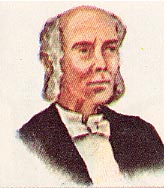 Carter, Sir Frederick Bowker (1819-1900), lawyer, [Prime Minister] of
Newfoundland (1865-69), was born at St.
John's on February 12, 1819. He was great-grandson of Robert Carter who
in 1750 was appointed Justice of the peace at Ferryland,
grandson of William Carter who was judge of the admiralty court during the
war of 1812, and son
of Peter Weston Carter, registrar of the court. He was educated in St. John's
and London, and after being called to the bar in 1842, carried on a successful
law practice. In 1855 he was elected to the House of Assembly for Trinity,
in 1861 became Speaker of the house, and in 1865 succeeded Sir
Hugh Hoyles as [Prime Minister]. [As the leader of the government, Carter
strongly opposed sectarianism and succeeded in having three prominent Roman
Catholics joined his cabinet.] In 1864 he was a delegate to the Quebec
conference, and favoured confederation,
but in the election
of November, 1869, was defeated by the powerful anti-confederation
campaign of Charles
Fox Bennett. He became [Prime Minister] again in 1875, and in 1878 succeeded
Sir Hugh Hoyles as Chief justice [of the Supreme Court of Newfoundland]. He
was the first Newfoundlander to be created K.C.M.G. He died on March 6, 1900.
In 1846 he married Eliza Walters (d. 1895), fourth daughter of George Bayly.
[Can.
Ency] [DCB]
[website] [Newfoundland
and Confederation] [F. B. T. Carter's 1865
Pro Confederation Speech] [Pro-confederation
speech in 1869] [Melvin
Baker on Newfoundland's rejection of Confederation with Canada in the period
of 1865-1874]
Carter, Sir Frederick Bowker (1819-1900), lawyer, [Prime Minister] of
Newfoundland (1865-69), was born at St.
John's on February 12, 1819. He was great-grandson of Robert Carter who
in 1750 was appointed Justice of the peace at Ferryland,
grandson of William Carter who was judge of the admiralty court during the
war of 1812, and son
of Peter Weston Carter, registrar of the court. He was educated in St. John's
and London, and after being called to the bar in 1842, carried on a successful
law practice. In 1855 he was elected to the House of Assembly for Trinity,
in 1861 became Speaker of the house, and in 1865 succeeded Sir
Hugh Hoyles as [Prime Minister]. [As the leader of the government, Carter
strongly opposed sectarianism and succeeded in having three prominent Roman
Catholics joined his cabinet.] In 1864 he was a delegate to the Quebec
conference, and favoured confederation,
but in the election
of November, 1869, was defeated by the powerful anti-confederation
campaign of Charles
Fox Bennett. He became [Prime Minister] again in 1875, and in 1878 succeeded
Sir Hugh Hoyles as Chief justice [of the Supreme Court of Newfoundland]. He
was the first Newfoundlander to be created K.C.M.G. He died on March 6, 1900.
In 1846 he married Eliza Walters (d. 1895), fourth daughter of George Bayly.
[Can.
Ency] [DCB]
[website] [Newfoundland
and Confederation] [F. B. T. Carter's 1865
Pro Confederation Speech] [Pro-confederation
speech in 1869] [Melvin
Baker on Newfoundland's rejection of Confederation with Canada in the period
of 1865-1874]
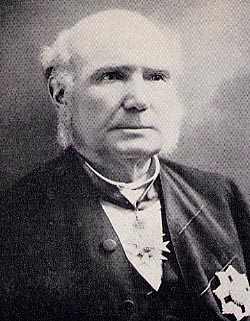
F. B. T. Carter was a strong supporter of union of Newfoundland
with Canada. He attended the Quebec
Conference in 1864
Carter, James (1831-1925), sheriff and author, grandson of Robert Carter who was Justice of the peace in Newfoundland in 1750, was born at Dartmouth, Devon, on September 23, 1831. For many years he was sheriff of Newfoundland, and he died on May 10, 1925. He was author of Six months in the Orient (Montreal, 1906) and In the wake of the setting sun (London, 1909). His wife, Harriet Elizabeth Felicia Carter, died in 1901.
Cartier,
Jacques (1491-1557),navigator, was born at St.
Malo, France, in 1491, the son of Jamet Cartier and Geseline Jansart.
Of his early life little is known; but in 1534 he was commissioned by the
French king to make a voyage of exploration to the Gulf
of St. Lawrence. He passed through the strait of Belle Isle, crossed to
the coast of Gaspé,
where he first came into contact with the Indians, and penetrated the gulf
of St. Lawrence as far as Anticosti.
In the spring of 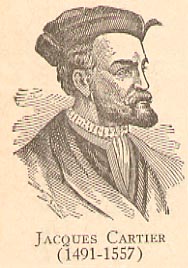 1535
he made a second voyage, and on this he ascended the river
St. Lawrence as far as the island
of Montreal. He wintered in the neighbourhood of the present city of Quebec,
and in 1536 returned to France. His third voyage did not take place until
1541; and on this occasion he was subordinate to the Sieur
de Roberval, to whom the king of France had issued a commission as lieutenant-general.
Cartier re-visited the island of Montreal, and again spent a winter in Canada,
waiting for Roberval;
but in the spring of 1542 he returned to France, passing Roberval at St.
John's, Newfoundland, on the way: It has been maintained that Cartier
made a fourth visit to Canada in 1543 or 1544; but there is no satisfactory
evidence of this, and it is probable that the voyage of 1541-2 was his last
visit to the St. Lawrence valley, of which he had been the discoverer. He
died at St. Malo on September 1, 1557. In 1519 he married Marie Catherine,
daughter of the Chevalier Honoré des Granches, high constable of St.
Malo; but he had no children. Cartier left narratives' of his first and second
voyages. The account of the second voyage was published, during his lifetime,
under the title Brief récit et succinte narration (Paris, 1545),
and has been reprinted with the manuscript variants (Paris, 1863). The account
of the first voyage first appeared, in an Italian translation, in Ramusio,
Navigationi a viaggi, Vol. III (Venice, 1556); secondly, in an English
translation from Ramusio by John Florio (London, 1580); thirdly, in a French
translation of a translation, under the title Discours du voyage (Rouen,
1598); and fourthly, in an account by Richard Hakluyt in his Principall
navigations (London, 1600). It was only in 1867, however, that the Relation
originale of the first voyage came to light in the Bibliothèque
Impériale in Paris, and was published by Michelant and Ramé
(Paris, 1867). For the third voyage the authority is Hakluyt. [No picture
or portrait of Cartier exist. All representations made of him - including
the one reproduced with this biography - are artistic representations of what
he might have looked like]. See H. P. Biggar, The voyages of Jacques Cattier
Ottawa, 1924), and Collection of documents (Ottawa, 1930); J. P.
Baxter, A memoir of Jacques Cattier (New York, 1906), Pope, Jacques
Cattier (Ottawa, 1890); N. E. Dionne, Jacques Cattier (Quebec,
1889; new ed., 1934); H. B. Stephens, Jacques Cattier and his four voyages
to Canada (Montreal, 1890); F. J. des Longrais, Jacques Cattier (Paris,
1888); S. Leacock, The mariner of St. Malo (Toronto, 1914); S. E. Dawson,
The St. Lawrence basin (New York, 1905) ; C. de La Roncière,
Histoire de la marine française, Vol. III (Paris, 1906) ; W.
F. Ganong, Cartier's first voyage (Trans. Roy. Soc. Can., 1887) and
Cartography of the Gulf of St. Lawrence (Trans. Roy. Soc. Can., 1889);
Abbé H. A. Verreau, Jacques Cattier (Trans. Roy. Soc. Can.,
1890, 1891, and 1897); P. de Cazes, Les points obscurs des voyages de Jacques
Cattier (Trans. Roy. Soc. Can, 1890). For bibliographical information
about Cartier's narratives: see H. Harrisse, Notes pour servir à
l'histoire de la Nouvelle France (Paris, 1872). [Can.
Ency] [DCB]
[biography at Wikipedia]
[biography
and links] [Les voyages
de Jacques Cartier] [Jacques
Cartier's page at the Museum of civilization] [Jacques
Cartier at the National Library site] [picture]
[English and
French exploration of Newfoundland] [Early
cartography of Newfoundland] [European
exploration to 1497]
1535
he made a second voyage, and on this he ascended the river
St. Lawrence as far as the island
of Montreal. He wintered in the neighbourhood of the present city of Quebec,
and in 1536 returned to France. His third voyage did not take place until
1541; and on this occasion he was subordinate to the Sieur
de Roberval, to whom the king of France had issued a commission as lieutenant-general.
Cartier re-visited the island of Montreal, and again spent a winter in Canada,
waiting for Roberval;
but in the spring of 1542 he returned to France, passing Roberval at St.
John's, Newfoundland, on the way: It has been maintained that Cartier
made a fourth visit to Canada in 1543 or 1544; but there is no satisfactory
evidence of this, and it is probable that the voyage of 1541-2 was his last
visit to the St. Lawrence valley, of which he had been the discoverer. He
died at St. Malo on September 1, 1557. In 1519 he married Marie Catherine,
daughter of the Chevalier Honoré des Granches, high constable of St.
Malo; but he had no children. Cartier left narratives' of his first and second
voyages. The account of the second voyage was published, during his lifetime,
under the title Brief récit et succinte narration (Paris, 1545),
and has been reprinted with the manuscript variants (Paris, 1863). The account
of the first voyage first appeared, in an Italian translation, in Ramusio,
Navigationi a viaggi, Vol. III (Venice, 1556); secondly, in an English
translation from Ramusio by John Florio (London, 1580); thirdly, in a French
translation of a translation, under the title Discours du voyage (Rouen,
1598); and fourthly, in an account by Richard Hakluyt in his Principall
navigations (London, 1600). It was only in 1867, however, that the Relation
originale of the first voyage came to light in the Bibliothèque
Impériale in Paris, and was published by Michelant and Ramé
(Paris, 1867). For the third voyage the authority is Hakluyt. [No picture
or portrait of Cartier exist. All representations made of him - including
the one reproduced with this biography - are artistic representations of what
he might have looked like]. See H. P. Biggar, The voyages of Jacques Cattier
Ottawa, 1924), and Collection of documents (Ottawa, 1930); J. P.
Baxter, A memoir of Jacques Cattier (New York, 1906), Pope, Jacques
Cattier (Ottawa, 1890); N. E. Dionne, Jacques Cattier (Quebec,
1889; new ed., 1934); H. B. Stephens, Jacques Cattier and his four voyages
to Canada (Montreal, 1890); F. J. des Longrais, Jacques Cattier (Paris,
1888); S. Leacock, The mariner of St. Malo (Toronto, 1914); S. E. Dawson,
The St. Lawrence basin (New York, 1905) ; C. de La Roncière,
Histoire de la marine française, Vol. III (Paris, 1906) ; W.
F. Ganong, Cartier's first voyage (Trans. Roy. Soc. Can., 1887) and
Cartography of the Gulf of St. Lawrence (Trans. Roy. Soc. Can., 1889);
Abbé H. A. Verreau, Jacques Cattier (Trans. Roy. Soc. Can.,
1890, 1891, and 1897); P. de Cazes, Les points obscurs des voyages de Jacques
Cattier (Trans. Roy. Soc. Can, 1890). For bibliographical information
about Cartier's narratives: see H. Harrisse, Notes pour servir à
l'histoire de la Nouvelle France (Paris, 1872). [Can.
Ency] [DCB]
[biography at Wikipedia]
[biography
and links] [Les voyages
de Jacques Cartier] [Jacques
Cartier's page at the Museum of civilization] [Jacques
Cartier at the National Library site] [picture]
[English and
French exploration of Newfoundland] [Early
cartography of Newfoundland] [European
exploration to 1497]
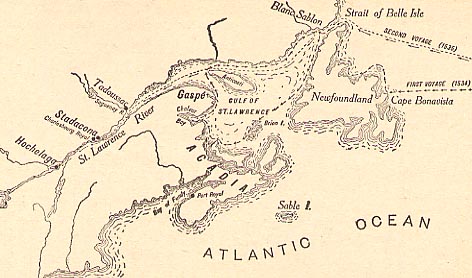
Map showing the route followed by Jacques Cartier in his
first and second voyages.
Cartier was the first to demonstrate conclusively that Newfoundland
was an island
 Cashin, Sir Michael (1864-1926), [Prime Minister] of Newfoundland
(1919), was born at Cape Broyle, Newfoundland, on September 29, 1864. He was
educated at St. Patrick's Hall and St. Bonaventure's College, and in 1885
entered business as a fish merchant. In 1893 he entered politics and was elected
as an Independent, but was associated with the Liberal party until he broke
with Sir
Robert Bond over the Bait
Act in 1904. In 1907 he joined the People's party of Sir
Edward Morris. He was the prime mover in the attempt to secure a branch
railway to Trepassey, and in 1911 turned the first sod. He was minister of
finance from 1909 until he became Prime Minister in 1919. His government was
defeated shortly after being formed, and in 1923 he relinquished party leadership
to Sir John Bennett. He retired from public life in 1924 and died on August
31, 1926. He was created K.B.E. in 1918. In 1888 he married Gertrude, daughter
of Capt. P. Mullowney of Witless Bay, and by her had four sons and one daughter.
See E. B. Foran, Newfoundland statesmen of the past in J. R. Smallwood
(ed.), Book of Newfoundland (St. John's, 1937). [Political
role during World War I]
Cashin, Sir Michael (1864-1926), [Prime Minister] of Newfoundland
(1919), was born at Cape Broyle, Newfoundland, on September 29, 1864. He was
educated at St. Patrick's Hall and St. Bonaventure's College, and in 1885
entered business as a fish merchant. In 1893 he entered politics and was elected
as an Independent, but was associated with the Liberal party until he broke
with Sir
Robert Bond over the Bait
Act in 1904. In 1907 he joined the People's party of Sir
Edward Morris. He was the prime mover in the attempt to secure a branch
railway to Trepassey, and in 1911 turned the first sod. He was minister of
finance from 1909 until he became Prime Minister in 1919. His government was
defeated shortly after being formed, and in 1923 he relinquished party leadership
to Sir John Bennett. He retired from public life in 1924 and died on August
31, 1926. He was created K.B.E. in 1918. In 1888 he married Gertrude, daughter
of Capt. P. Mullowney of Witless Bay, and by her had four sons and one daughter.
See E. B. Foran, Newfoundland statesmen of the past in J. R. Smallwood
(ed.), Book of Newfoundland (St. John's, 1937). [Political
role during World War I]
[Cashin, Peter (1890-1977). Born in Cape Broyle, he served in the Newfoundland Regiment in the First World War; subsequently was elected to the Newfoundland House of Assembly (1923-1932). Cashin was a strong supporter of a return to Responsible Government; after his election to the National Convention in 1946, he opposed Newfoundland's union with Canada. Served again as a member of the House of Assembly after Confederation.] [Biography at the Newfoundland Heritage site] [Major Peter Cashin's remarks concerning attitude of Commission of Government to delegation from National Convention and Convention's Terms of Reference] [Cashin's report from the London delegation] [Picture of the members of the National Convention] [The Prophesy of Peter Cashin] [History of the Newfoundland National Convention] [Biography at the Canadian Confederation site of the National Library]
Clinton, George (fl. 1732-51), admiral, second son of Francis, sixth earl of Lincoln, was governor of Newfoundland between 1732 and 1737. Later he served for ten years as governor of New York. [DCB] [website]
Coaker, Sir William Ford (1871-1938) founder of the Fishermen's Protective Union, was born at St. John's; Newfoundland, on October 19, 1871, son of William Coaker and Elizabeth Ford. He was educated at Bishop Feild College, spent five years as an agent for a fish merchant, and for many years farmed successfully on an island in Green bay. In November, 1908, he organized the first local of a co-operative which he called the Fishermen's Protective Union. Under his direction the union grew rapidly and established a trading company, a publishing company, a light-and-power company, a shipbuilding and a shipping company, and a cold storage company. In 1914 he built the town of Port Union as headquarters. In 1912 he founded the Fisherman's Union party, and in the House of Assembly he represented Bonavista from 1913 to 1915, Twillingate for the next four years, and Bonavista from 1919 until 1924. He was a member of the coalition cabinet during the war, and from 1919 until 1924 was minister of marine and fisheries. He was created a K.B.E. in 1923. He wrote the early numbers of Fisherman's Advocate, and was the author of History of F.P.U. for ten years. He died in 1938. In 1901 he married Jessie, daughter of Robert Cook, and by her had one daughter. See J. R. Smallwood, Coaker of Newfoundland (London, 1927). [Can. Ency] [Bibliography of Coaker and the Fisherman's Union] [The Rise of the Fisherman's Union, 1908-1919] [The Fisherman's Protective Union and Politics] [William Ford Coaker History Page] [Webpage on Coaker] [Biography at the Orangeism site]
Cochrane, Sir Thomas, first resident governor of Newfoundland (1825-34), opened the first local legislature after the granting of representative government in 1832. During his régime a new government house was built, agriculture was encouraged, and the first roads were built. After the coming of representative government, Sir Thomas was accused of favouritism, and it is said that a mob threw mud at him as he took his last drive through St. John's. [website] [DCB]
Cook, Sir Tasker (1867-1937), mayor of St. John's, Newfoundland, (1921-1929), was born at St. John's on June 30, 1867, son of William Cook, ship's chandler and farmer. He was educated at the Church of England Academy, entered his father's business, and eventually became a director of several local enterprises. He became mayor of St. John's in 1921, and in 1925 was reelected without opposition. He was government leader in the legislative council and also chairman of the railway commission from 1928 to 1932. He was created a K.B.E. in 1931, and for his consular services to Denmark, Norway and France was made a Knight of Dannebrog, Knight of St. Olaf, and Chevalier de la Légion d'Honneur. He died in St. John's on September 25, 1937. In 1891 he married Henrietta L. Pennock (d. March 1936) and by her had four sons. See The passing of Sir Tasker Cook (Newfoundland Quarterly, 1937). [Short biography as mayor of St. John's]
Cormack, William Epps (1796-1868), explorer, was born in St. John's, Newfoundland on May 5, 1796, and was educated in Edinburgh and Glasgow. In 1822 he crossed the island, being the first white man to do so. He traveled afoot, with a Micmac guide, from Smith's sound, Trinity bay, westward to St. George bay, completing the journey in nine weeks. His account, Journey across Newfoundland, was first published (in brief) in the Edinburgh philosophical journal in 1824, and published separately in St. John's in 1856. Cormack's interest in the aborigines led him to form in St. John's, in 1827, the Beothuk Institute, with the object of locating and civilizing the tribe. In 1827 he made an extensive search for Beothuks; but found none. Nancy Shanawdithit , last known member of the tribe, lived in his house for a few months before her death in the spring of 1829. In 1836 he moved to Australia, where he cultivated tobacco with some success, and in 1839 moved on to New Zealand, where he raised cattle and horses and exported timber. His wide Feild of interests included outdoor sports, and during a visit to Scotland in 1855, he published a revised and enlarged version of R. A. Jones's Art of skating. From New Zealand he moved to California and eventually to New Westminster, British Columbia, where he busied himself with public and scientific affairs until his death in 1868. See biographical notes in J. P. Howley, The Beothucks or Red Indians (Cambridge, 1915). [Can. Ency] [DCB] [Beothuk Indians]
Cortereal, Gaspar (d. 1501 ?), navigator, was a native of the island of Terceira, in the Azores. In 1500 he was commissioned by the king of Portugal to make a voyage of exploration to the New World, and was appointed governor of whatever countries he might discover, within the limits assigned to Portugal under the treaty of Tordesillas. In the summer of 1500 he explored part of the east coast of Greenland, but was turned back by the ice; and in 1501 he made a second expedition, with three ships, during which he visited the shores of Labrador and Newfoundland. At Hamilton bay, he seized about 60 natives, and sent them back to Lisbon as slaves. He himself proceeded south of Newfoundland; but his ship was never heard of again, and it is probable that it was lost with all on board some time in the autumn of 1501. In 1502 Michel Cortereal, his brother, set out in search of him, but he too disappeared. See H. P. Biggar, The precursors of Jacques Cartier (Ottawa, 1913). [DCB] [Can. Ency] [The Cortereals at the National Library site] [picture of the monument of Gaspar Corte Real in front of the Confederation building, St. John's, Newfoundland] [The Portuguese explorers of Newfoundland] [Early cartography of Newfoundland] [European exploration to 1497]
Coughlan, Lawrence (fl.1765-1773), clergyman, arrived in Newfoundland in 1765 under the auspices of the Society for the Propagation of the Gospel in Foreign Parts. He was, however, a follower of John Wesley, and his evangelistic teachings won him many enemies. He was opposed and insulted by his parishioners at Harbour Grace, was tried in the chief court of the island and finally summoned to appear before the governor. When the governor declared in his favour and made him a justice of the peace, his enemies plotted to poison him, but the plot was revealed. He returned to England in 1773. Though his work was carried on by two of his Methodist converts, it was not until 1785 that the first regularly appointed Methodist missionary arrived in Newfoundland. [DCB] [Coughlan's Account of the Word of God in Newfoundland (1776)] [Can. Ency]
[Crawford, James (1893-1963). World War I veteran, businessman, Commanding officer of the Church Lads' Brigade (1935-1947). (Archival treasures of Memorial University)]
[Crosbie, Chesley (1905-1962). Born in a wealthy St John's business family, his father was Sir John Chalker Crosbie. He was a delegate to the National Convention who favoured a return to Responsible Government; faced with the strong showing by the pro-Confederation forces, he championed a free trade association with the United States. A member of the delegation sent to Ottawa to negotiate the terms of union of Newfoundland with Canada, he refused to sign the agreement, contending that the financial terms would put Newfoundland in a fiscally unsound position. After Confederation, he returned to business affairs.] [Biography at the Newfoundland Heritage site] [Picture of the members of the National Convention] [History of the Newfoundland National Convention]
[Crosbie, John Carnell (1931- ). Born in St John's
in a prominent and powerful business and political family - his father was
Chesley Crosbie
and his grandfather was Sir
John Chalker Crosbie - he followed the family tradition and studied law
at Dalhousie University and went into business and politics. He was first
elected to the St. John's city council in 1965. The next year, he was appointed
to the provincial cabinet by Joseph
Smallwood and was elected to the provincial House of Assembly. In the
late 1960's, he challenged unsuccessfully the leadership of the Liberal Party
held by Smallwood, left the party and, eventually, joined the Progressive
Conservative party. He sat as a PC member of the House of Assembly, and a
cabinet minister in the Moores'
government, between 1972 and 1976. In 1976, he entered federal politics,
rose rapidly to prominence, and became the finance minister in the short-lived
Clark
government in 1979-1980. In 1983, he sought the leadership of the federal
Progressive-Conservative party but failed, finishing third behind Brian
Mulroney and Joseph (Joe) Clark. Between 1984 and 1993, he held various
important cabinet positions in the Mulroney government, including International
trade and Fisheries. He resigned from politics in 1993. In 1994, he was appointed
Chancellor of Memorial University of Newfoundland.
Throughout his career, Crosbie displayed intelligence and resilience. He was
gifted with a quick-wit that got him into trouble on a few occasions but,
otherwise, was amiable and interesting, and refreshingly unconcerned with
political correctness. His autobiography - No
Holds Barred (1997), - is frank, candid, and typical of his style.]
[Can.
Ency]
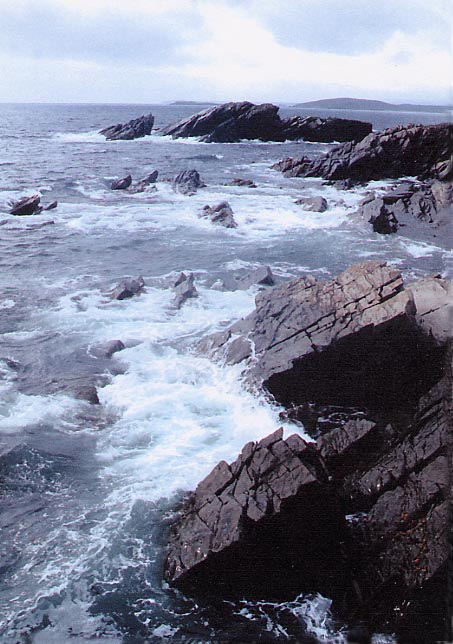
Little Catalina, Trinity Bay
(photo courtesy of Kent Hotson)
Crosbie, Sir John Chalker (1876-1932), merchant and statesman, was born at Brigus, Newfoundland, on September 11, 1876, son of George Graham Crosbie and Martha Ellen Chalker. He was educated at Methodist College, St. John's. In 1900 he formed his own mercantile company, and subsequently was a director of several companies. He was elected for the district of Port de Grave as a member of the People's party in 1908, became minister of shipping in 1917 and the following year was created a C.B.E. He was acting prime minister of Newfoundland in 1918. He became minister of finance and customs in 1924, and served for four years before retiring from public life. He died on October 5, 1932, in St. John's. In 1899 he married Mitchie, daughter of Josiah Manuel, and by her had five sons and six daughters. [Can Ency]
Curtis, Levi (1858-1942), clergyman, was born at Blackhead, Newfoundland, on February 22, 1858, the son of Appolos Curtis and Harriet Moores. He was educated at Methodist College, St. John's, and Mount Allison University (B.A. 1889, M.A. 1900), and from 1889 to 1899 served in the Methodist pastorate. For many years he was superintendent of education for the United Church in Newfoundland, was member of a great number of religious and educational boards and conferences, and was twice president of the Newfoundland Methodist conference. He was editor of Newfoundland Monthly Greeting for twenty-seven years, and was one of the founders of Memorial University College, St. John's. He died on September 7, 1942. In 1889 he married Lillie Cordelia Black of Dorchester, New Brunswick, and by her had two sons and two daughters.
[Darling, Sir Charles Henry (1809-1870). Colonial governor of Newfoundland from 1855 to 1857. (Newfoundland heritage site)] [DCB]
Davidson, Sir Walter Edward (1859-1923), governor of Newfoundland (1913-17), entered the civil service in 1880, served in Ceylon and subsequently in Transvaal (1902-04), Seychelles islands (1904-12), Newfoundland, and New South Wales (1918-23). He was author of two books on Ceylon (1886, 1900), and editor of a volume of Seychelles papers (1909). He died in September, 1923. He was twice married, (1 ) in 1882 to the daughter of John Baber, M.D., of London, by whom he had one son, and (2) in 1907 to Margaret Agnes, daughter of General Sir Percy Feilding, by whom he had two daughters. [website]
Dawe, Eli (1843-1930), merchant and politician, was born on November 15, 1843, at Port de Grave, Newfoundland, the son of Elijah Dawe and Emma Batten. For several years he was a fisherman, and later became director of a coal company at Coley's Point. He was elected to the assembly first in 1889, for Harbour Grace, was appointed financial secretary in the Whiteway administration, and in 1903 became minister of agriculture and mines in the Bond administration. In 1922 he was appointed to the legislative council. He died in June, 1930. In 1873 he married Susannah Bradbury, and by her had one son and three daughters.
[Demarest, Voorhis David (1890-1979). World War I veteran, businessman, genealogist and amateur photographer. (Archival treasures of Memorial University)]
Des Voeux, Sir George William (1834-1909), governor of Newfoundland (1886), was born at Baden, son of Henry Des Voeux and Fanny Elizabeth Hutton. He attended Oxford, moved to Canada in 1856, and graduated from the University of Toronto. He studied law, and after a brief practice at the Canadian bar, embarked on a career of colonial administration. He served as a superintendent in British Guiana (1863-69), administrator of St. Lucia (1869-78), governor of Fiji (1878-85), Newfoundland (1886), and Hong Kong (1887-91). He published his autobiography, My colonial service, in 1903, and in the same year was created G.C.M.G. He died in London on December 15, 1909. In 1875 he married Marion Denison, daughter of Sir John Pender, and by her had two sons and two daughters. [website]
[Dickenson, Ethel Gertrude (1880-1918). Teacher who died assisting patients afflicted with the Spanish Influenza in 1918. (Archival treasures of Memorial University)]
Dorrell (or Dorrill), Richard, naval captain, was governor of Newfoundland from 1755 to 1756. [website] [DCB]
[Douglas, James (1703-1787). Naval governor of Newfoundland in 1746. (Newfoundland heritage site)]
Drake, Sir Francis William (d. 1789?) vice-admiral, was governor of Newfoundland from 1750 to 1752. [website] [DCB]
Duckworth, Sir John Thomas, first Baronet (1748-1817), admiral, was governor and commander-in-chief of Newfoundland from 1810 to 1813. [website] [DCB]
[Duder, Edwin Francis (1908-1980). Journalist, film editor and poet of Newfoundland. (Archival treasures of Memorial University)]
Duff, Robert (d. 1787), governor of Newfoundland (1775-76), was a cousin of the first Earl of Fife. He became a commander in 1744, had an active naval career, and attained the rank of vice-admiral nine years before he died. [website]
[Duley, Margaret (1894-1968). Newfoundland novelist of note. (Archival treasures of Memorial University)]
Source: For material that is not between brackets [.], W. Stewart WALLACE, ed., The Encyclopedia of Canada. Newfoundland Supplement, Toronto, University Associates of Canada, 1949, 104p. Weblinks have been added to the text.
© 2004 Claude Bélanger, Marianopolis College |